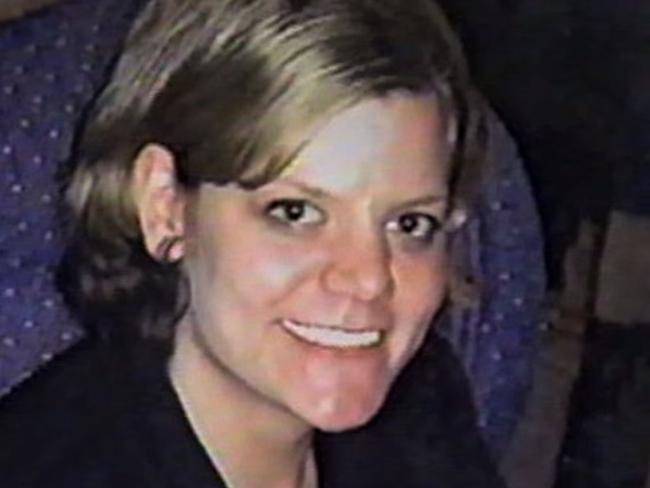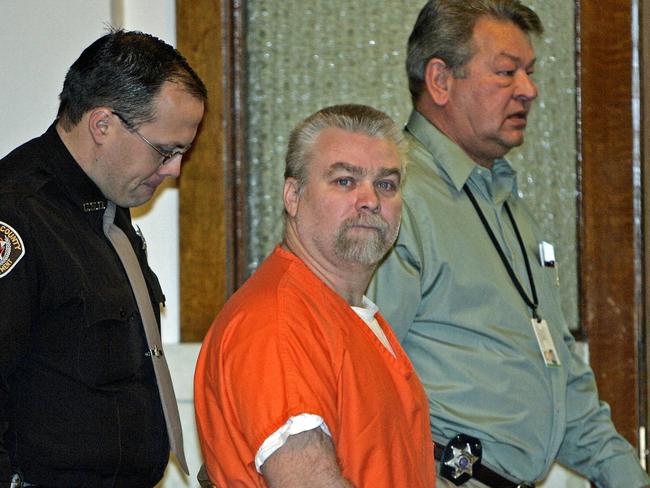Anonymous enters Steven Avery murder case, claiming police corruption
HACKER group Anonymous has waded into the murder conviction of Steven Avery, promising to release explosive new evidence.
HACKER group Anonymous has stuck its nose into one of America’s most controversial and highly publicised murder cases, promising to release stunning new evidence.
Steven Avery’s story is already as incredible as they come. Avery spent 18 years in prison after being wrongfully convicted of rape. When he was finally released in 2003, he became the poster boy for the falsely accused; a shining example of what happens when the authorities get it wrong.
Then, just two years later, Avery found himself in trouble with the law again. This time, the charge was murder.
He was accused of killing 25-year-old photographer Teresa Halbach, who had visited his home to take pictures of a car he supposedly wanted to sell. Avery and his lawyers claimed the Sheriff’s office had framed him because of the multi-million dollar civil case he’d lodged, which put them on the hook for $US36 million in damages.
But DNA evidence, which had exonerated him of rape, was this time used to convict him of murder.
Avery’s story is the subject of a new Netflix documentary series released this month, called Making a Murderer. That’s iginited global interest in the case, and now Anonymous’s intervention could add yet dramatic another twist.
The hacker group has set up a dedicated Twitter account where it says it will release phone recordings and e-mails which prove police involved in the murder investigation colluded to put Avery away.
This will be the Official #Anonymous Thread Releasing Documents Concerning #ManitowocCounty Corruption Emails and Collusion #MakingAMurderer
— OPAVERYDASSEY (@OPAVERYDASSEY) December 28, 2015THE EVIDENCE
In October 2005 Teresa Halbach, who worked as a photographer for the Auto Trader magazine, was scheduled to visit Avery’s rural Auto Salvage Yard to take a picture of a car he apparently wanted to sell.
When she failed to return home, a search began which led to Avery’s family property.
Shortly afterwards, police found bone fragments, teeth, a camera and mobile phone pieces in a burn pit near Avery’s trailer. They were later confirmed to be Halbach’s.
Avery’s blood was found in the car, along with Ms Halbach’s, and Avery’s DNA was found on her car keys.
Halbach’s DNA was also discovered on bullet fragment found in Avery’s garage.

In 2007, Avery and his 17-year-old nephew Brendan Dassey were convicted of the murder. Dassey, then 16, allegedly confessed to helping his uncle carry out the crime, but there has been speculation that police manipulated the young boy, who suffers from learning difficulties, into making the damning statement.
When it was time for the trial, he recanted his confession and never gave evidence against his uncle.
Crucial proof that was used to convict Avery in the murder was brought forward by Manitowoc County Sheriff’s Department’s Sergeant Andrew Colborn and Sheriff’s Department Lieutenant James Lenk. This evidence was missed by other officers on multiple prior searches of Avery’s property.
For the conspiratorially minded, the two officers certainly had reason to see Avery convicted. The pair were named in the $US36 million lawsuit against the county for his previous wrongful incarceration.
According to the Post Crescent, Colborn and Lenk are also believed to have discovered evidence that could have exonerated Avery in the rape case well before he was released. On top of that, the District Attorney at the time, Denis Vogel, was aware of complaints made against Gregory Allen, who was charged with the crime after Avery was freed.
Avery and his defence lawyer maintain he was framed by the Sheriff’s Office, at least in part due to the pending litigation against them. During the murder trial, his lawyers argued Manitowoc County deputies could have planted Avery’s blood at the scene from a vial from his rape trial that had been kept at the courthouse.
ANONYMOUS ENTERS THE FRAY
Since setting up its special Twitter account on December 28, Anonymous claims to have been combing through the phone records and e-mails of Colborn and Lenk. At the time of writing, it has posted 27 tweets promising to release evidence of police collusion. The latest one includes an apparent e-mail address for Lenk at the time of the investigation and a taunt for Colborn.
Initially, Anonymous promised it would release the information in 48 hours, but as that self-imposed deadline passed by, followers began to become sceptical..
We will be releasing phone Records #Anonymous #MakingAMurderer Between James Lenk & Andrew Colborn On Nov 3rd 2005 pic.twitter.com/Bors7rBcru
— OPAVERYDASSEY (@OPAVERYDASSEY) December 28, 2015A reddit thread discussing the involvement of Anonymous in the case reveals many doubt the significance of any evidence the hackers will be able to uncover.
“I’ll believe it when I see it,” commented one reddit user.
“I do not think anything they produce will be credible,” said another.
But plenty of others are still holding out hope.
Its Going Well #OpAveryDassey #ManitowocCounty #MakingAMurderer We are now going for Andrew L Colborn's Phone Records Bare With Us
— OPAVERYDASSEY (@OPAVERYDASSEY) December 29, 2015
STEVEN AVERY’S UNLUCKY EARLY LIFE
Since being convicted in 2007, Avery has lodged several appeals with no success. His latest was filed in August this year.
While a certain amount of contention — fuelled by the Netflix documentary — lingers over his murder conviction, the fact remains he spent nearly two decades in prison as an innocent man.
He was just 22 when he was sent to prison for the alleged rape of Penny Ann Beernsten.
Ms Beernsten was running along Lake Michigan on July 29, 1985 when she was attacked by an unknown male who sexually assaulted her.
Police had put together a series of photos based on her description of the attacker and she identified Avery. He was arrested the next day and charged with rape. Avery, who was married with several children, had no history of sexual violence at the time.
According to the Wisconsin Innocence Project, which helped free Avery, a jury convicted him based on Ms Beernsten’s testimony that she was positive he’d raped her. In doing so, it discounted 16 witnesses who provided alibis for Avery, including a store clerk from neighbouring Green Bay who recalled seeing him with his wife and children buying paint from the store an hour before the attack.
He was sentenced to 32 years in prison.
For several years, Avery protested his innocence only to have appeals against his conviction turned down. However, in 1995 a petition for DNA testing was granted.
In 2002, by using the FBI DNA database, Avery’s lawyers were able to link a hair found on Ms Beernsten to Gregory Allen, a man who was already serving a 60-year prison term for sexually assaulting a woman in Green Bay after the attack against Ms Beernsten took place. On September 11, 2003 Avery was released.
But just over two years later, he found himself back in handcuffs, and back behind bars. This time, possibly for good.



